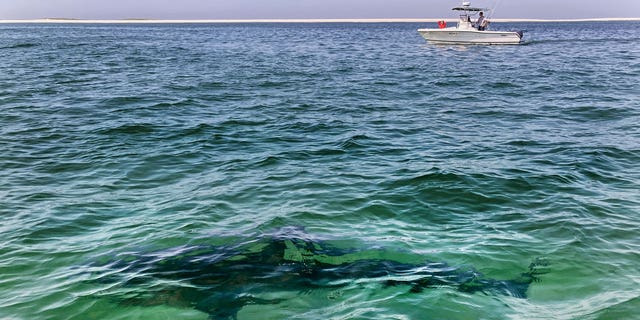
- The Environmental Protection Agency has issued a draft determination warning that a proposed machine gun training range on a National Guard base could threaten drinking water for over 220,000 Massachusetts residents.
- No alternative water sources would be available if the Cape Cod aquifer were contaminated, the agency noted.
- “The risk of irreparable damage to the only drinking water source on Cape Cod is too significant,” EPA Regional Administrator David Cash wrote.
The U.S. Environmental Protection Agency issued a draft determination Thursday that a proposed machine gun training range at a National Guard base could pose a threat to Cape Cod’s drinking water, potentially creating a public health hazard for more than 220,000 year-round residents.
There are no reasonably available alternative drinking water sources for residents should the Cape Cod aquifer become contaminated, the agency said.
“We have studied the proposed machine gun range very carefully because EPA recognizes the need for our armed forces to maintain readiness and provide training to service members,” EPA Regional Administrator David Cash said in a written statement.
“However, the risk of irreparable damage to the only drinking water source on Cape Cod is too significant,” he added.
The agency said it will accept public comment on the proposed machine gun range through June 26, and will hold a public hearing on May 24.
The Massachusetts Army National Guard has proposed building the new 138-acre gun range at Joint Base Cape Cod. The EPA launched a review of the project in August 2021.
In a statement Thursday, the Massachusetts National Guard said it is aware of the EPA’s draft findings and will provide “a robust response” during the public comment period.

A proposed machine gun training range at Joint Base Cape Cod in Massachusetts could threaten the area’s aquifer, endangering the water supply of over 220,000 permanent residents, the Environmental Protection Agency warned Thursday. (AP Photo/Phil Marcelo, File)
“The Massachusetts National Guard remains deeply committed to upholding environmental protections while providing our personnel with a range that serves our complex training needs and enhances soldier readiness,” the guard said in a written comment.
The guard also said it has commissioned research over the past decade to ensure their military training is environmentally compliant. Those studies found that small-arms fire currently conducted at Camp Edwards does not impact the aquifer, the guard said.
The EPA study included a 20-month scientific review of the design and operational plans for the proposed site, according to the agency.
The federal Safe Drinking Water Act mandates a strong preventative approach where a drinking water supply is highly dependent on a single aquifer, the agency said.
If the aquifer were to become contaminated, surrounding areas might need to construct and operate expensive advanced drinking water systems, overburdening communities that already face economic hardships, according to the EPA.
If the agency makes a final finding that the machine gun range is hazardous. no federal dollars would be allowed for the project.
EPA SETTLEMENT WOULD FORCE PENNSYLVANIA TO CUT CHESAPEAKE BAY POLLUTION
The range has won other key federal approvals.
The proposed gun range has also drawn concerns from neighbors, environmental activists and state and federal lawmakers including the state’s two U.S. senators — Democrats Elizabeth Warren and Edward Markey — about potential negative environmental impacts.
In 1982, the Cape Cod aquifer was designated as the sole or principal source of drinking water for Cape Cod, according to the EPA.
CLICK HERE TO GET THE FOX NEWS APP
The agency defines a sole source aquifer as one where the aquifer supplies at least 50% of the drinking water in its service area and there are no reasonably available alternative drinking water sources should the aquifer become contaminated.









